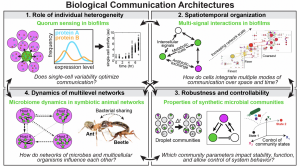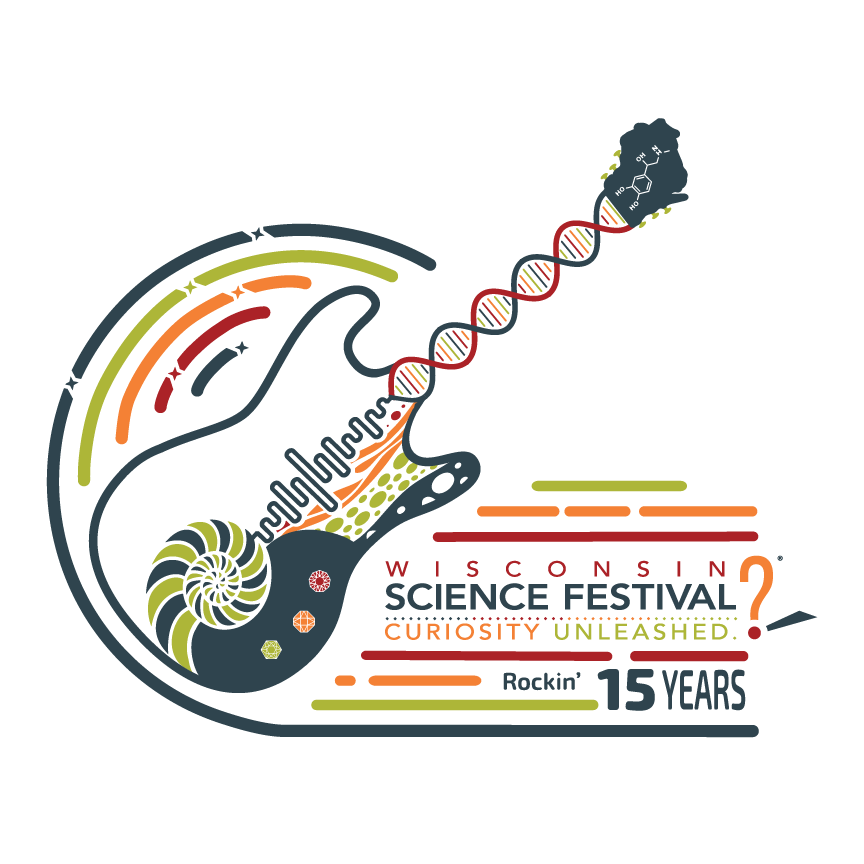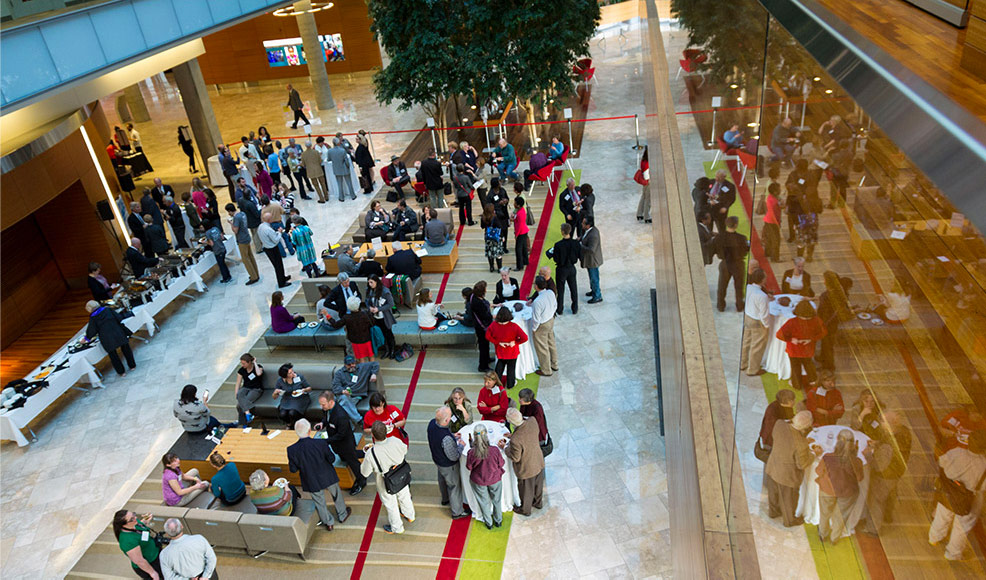UW–Madison Researchers Earn Army Research Office Grant to Study Microbial Communication
Two University of Wisconsin–Madison researchers have been awarded more than $1 million as part of the multidisciplinary university research initiative from the United States Army Research Office to better understand microbial communities. Jo Handelsman, director of the Wisconsin Institute for Discovery, and Ophelia Venturelli, assistant professor in the Department of Biochemistry, are co-investigators on the project, which involves more than $6 million and seven faculty members at universities across the United States.
Their project is titled “Investigating energy efficiency, information processing and control architectures of microbial community interaction networks.” Led by James Boedicker at the University of Southern California, the grant also includes researchers from the University of Michigan and the California Institute of Technology, as well as others at Southern California.
“We are interested in understanding information transmission in microbial communities and how biological networks communicate across different scales while minimizing energetic costs, all the way from microbial communities to the social networks of multi-cellular organisms that harbor these microbes,” explains Venturelli. “This grant brings together a diverse group of researchers to bridge theory, modeling and, experimentation across different microbial consortia and insects.”
Microbes are ubiquitous in any environment and many of their effects and methods of communication are complex and unknown. In an almost mind-boggling network of connections, bacteria can, for example, communicate among themselves using various molecules or quorum sensing to form resilient communities called biofilms, and these behaviors depend on population size and how they are distributed in an environment.
Additionally, organisms such as insects harbor communities of microbes outside and inside their bodies — and these microbes move between the insects. The researchers want to investigate how the microbial networks affect the relationships among the insects and vice versa. Through experiments and theoretical frameworks, the researchers hope to devise an overarching model of information exchange and complex networks.

This figure from the researchers’ proposal summarizes the different scales, theories, organisms, and more that the group will be connecting in their research. Image courtesy of research team.
Venturelli’s role encompasses both theory and experimentation. She’s involved in developing computational models and microfabrication technologies to study information transfer, robustness, and controllability in microbial communities. Microfabrication allows precise control of spatial and temporal environmental stimuli and manipulation and analysis of large numbers of different microbial groups. Experiments on model microbial communities can provide fundamental insights and design principles of communication architectures that can be used to study more complex communities.
“We are also interested in how information exchange in microbial communities can be controlled and designed using tools from machine learning,” she adds. “We are excited to collaborate with members of the team on developing and applying machine learning techniques to microbial communities. Another area of interest is understanding information flow and energy use in microbial communities. Communicating information takes energy and we ideally want to maximize that information while minimizing the energy cost.”
“Perhaps microbial ecology can then drive the theory of all ecology because we are able to do experimental development and verification that can’t be done in other systems.”
Handelsman’s lab studies soil microbes and biofilms, which are tough collections of bacteria that help them evade antibiotics and survive in harsh environments. Using a three-member bacterial community her lab constructed called THOR, she’s able to take a precise look at community characteristics like genetics and metabolism. In this new project she and the collaborators will work to mathematically model their interactions to make predictions about community behavior.
She calls this project the “mathematical extension” of her work with THOR. Because this small community is easily manipulated, they can look for principles in microbial ecology that are recapitulated in macroecology.

Jo Handelsman, Director, Wisconsin Institute for Discovery
“Eventually we hope that those predictions will be applicable for other communities so that what will emerge are general principles about microbial communities,” she says. “In our system, we can control every single gene and measure every single metabolite. If there are common principles, it should lead to the big principles of ecology, and it can be done more precisely and quickly than is possible in macroecosystems. Perhaps microbial ecology can then drive the theory of all ecology because we are able to do experimental development and verification that can’t be done in other systems.”
The Department of Defense is keenly interested in these overarching principles of information exchange because of their potential to provide insights into telecommunications and personnel systems.
“It’s not just macro and microecology,” adds Handelsman. “Are there system-level principles that transcend ecology that could be helpful?”
UW–Madison researchers are part of three of the Army Research Office’s recent 24 awards. The Army Research Office is part of the Army Research Laboratory, overseen by the Department of Defense.
This story originally appeared on biochem.wisc.edu. Author: Kaine Korzekwa









